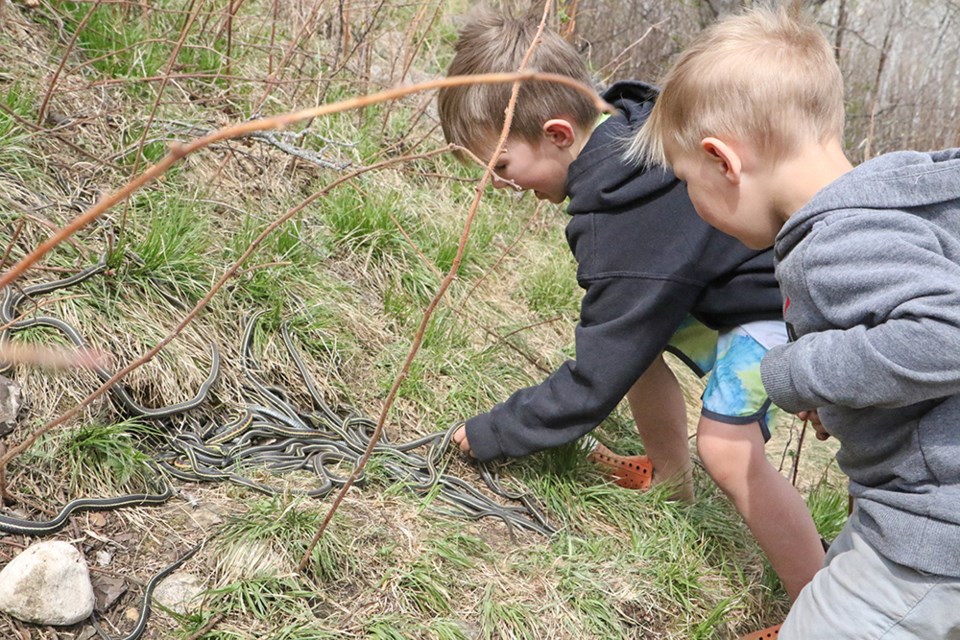PELLY — For around two weeks in the spring, the first capital of the Northwest Territories becomes the snake capital of Saskatchewan.
At the Fort Livingstone National Historic Site north of Pelly, where the land descends into a valley containing the Swan River, is the perfect site for garter
snakes to brumate – the reptile version of hibernation.
As they leave their dens, the snakes clump together to breed before they head out into the countryside.
It became a tradition for Pelly residents to watch the snakes. In the years after the original Fort Pelly-Livingstone Museum burnt down in 2015, a new board
made the tradition an official Mother’s Day event for the museum.
“We decided to make it an annual event to try to promote the museum,” said Donald Budz, the president of the Fort Pelly-Livingstone Museum.
“We decided we’ll just have it where we can meet people, talk to them about what’s going on. We have an opportunity where we serve hot dogs, a drink, to the people. We provide some education, where we tell people, ‘Please do not handle the snakes in a fashion that wouldn’t hurt them. You can look at them. Do not disturb their habitats.’”
The event also serves as a soft opening for the Fort Pelly-Livingstone Museum in Pelly seven kilometres away.
The Fort Livingstone snake pits are one of two public snake pits in Western Canada, the other being the Narcisse Snake Dens in Manitoba.
Budz said those wanting to see the snakes can get details from the museum or the Town of Pelly.
“The time that the snakes are out is weather dependent. So if it is a warmer spring, they tend to come out because they’re being a cold-blooded animal. They want to warm up in the sun, so if it’s a cold temperature, they won’t be out,” the president said. “They’re only out for approximately two weeks before they disperse and then they go to various places in the countryside and come back in the fall.”
The Fort Pelly-Livingstone Museum will have its official opening day on May 31, church services at the historical St. Albans Church in Pelly on July 6 and Aug. 10, an Indigenous celebration on July 19 and a learn-to-do activity (to be announced) on Aug. 9. The museum will close for the season Sept. 6.




